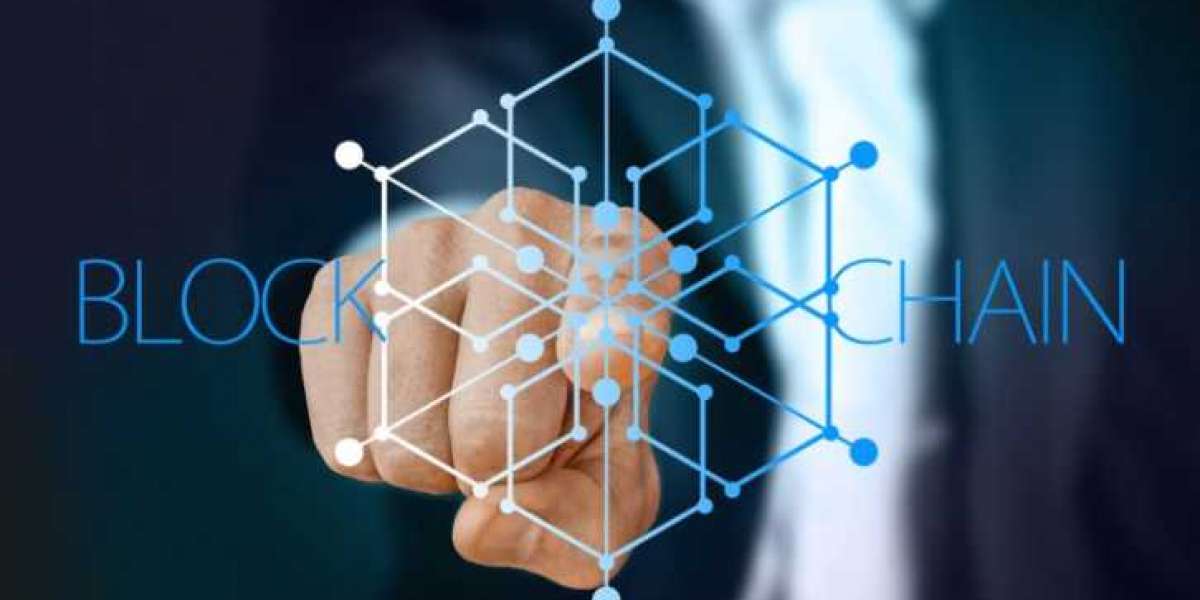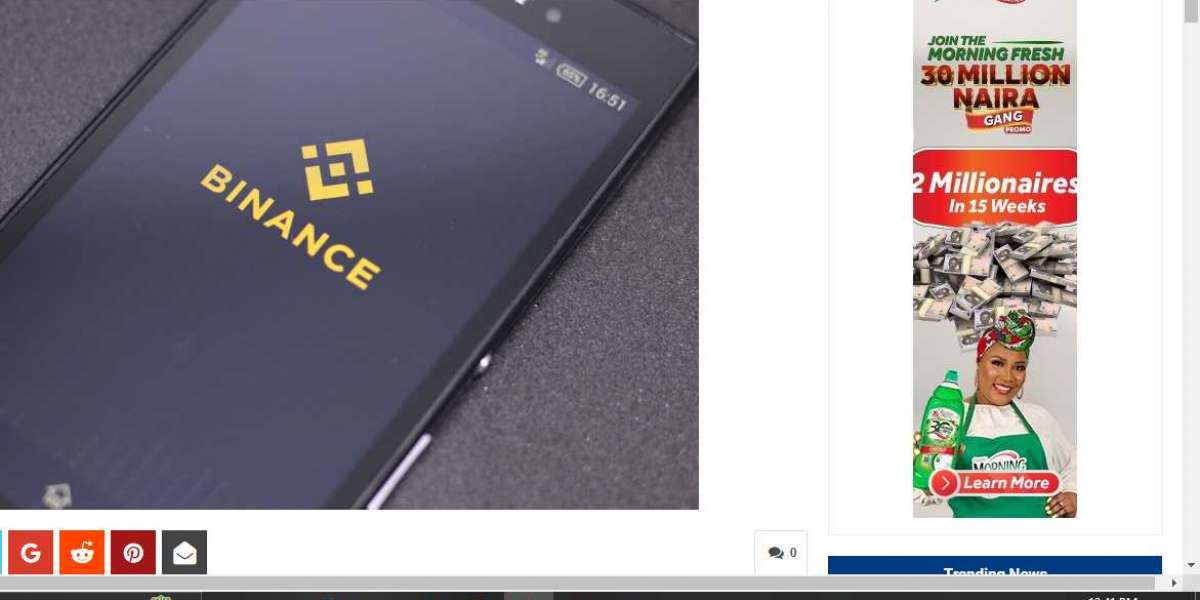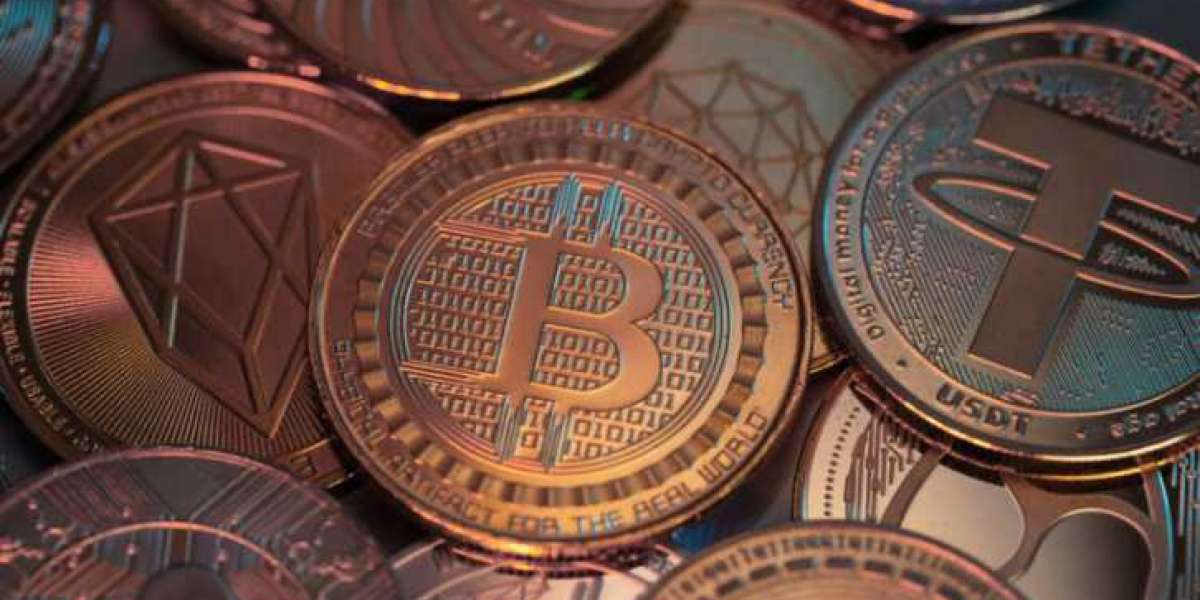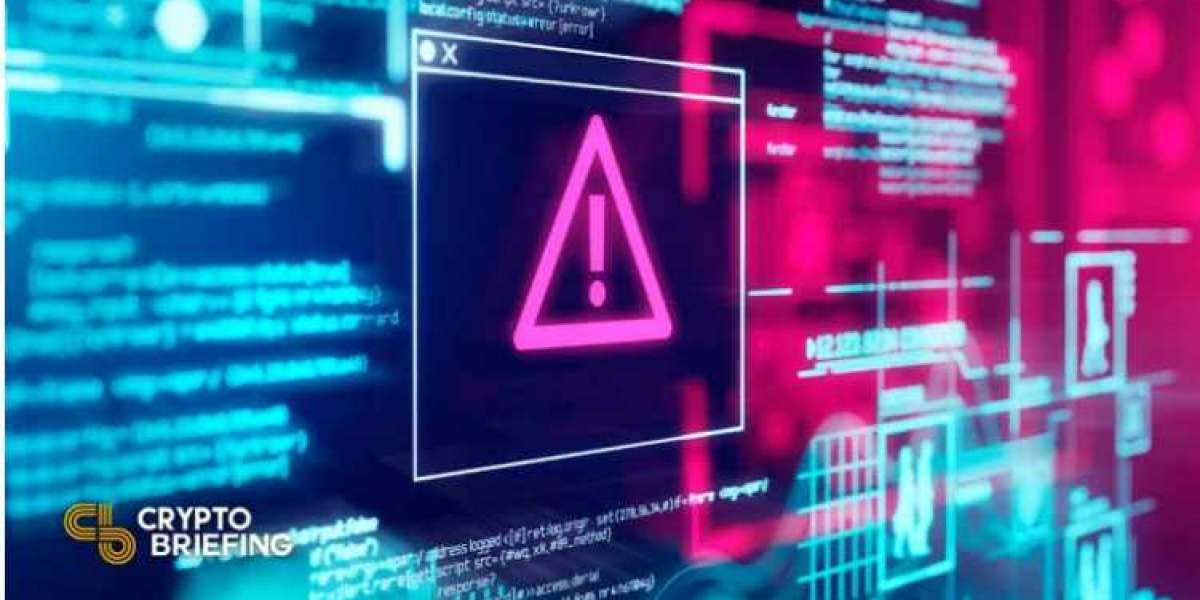On the other hand, the decentralized nature of the blockchain technology is currently making waves all over the world. This idea is currently being worked on by the developers of blockchain technology in order to assist users in gaining control over their assets and funds. Users who want to understand the concept and purpose of the decentralized identity in blockchain technology and its applications in the future can refer to the following guide, which provides extensive detail on the topic.
What Exactly Does One Mean When They Talk About Decentralized Identity?
Decentralized identity refers to an independent identity that is wholly owned by the user themselves, as the term's namesake suggests. Its primary function is to ensure the trustworthy transfer of data from one party to another. The idea of decentralized identity refers to an identity management system that is supported by a trust framework. In reality, it is a Web3 concept that is still in the process of being developed.
By utilizing decentralized identity management, individuals can have control over the personally identifiable information (PII) that pertains to them and can also easily manage and generate this information. It makes it possible for users to have a smooth experience when interacting with the administration and a practical experience when accessing their credentials. Users are not required to carry any third-party validations with them, such as certificates, registries, or identity providers of any kind.
The term "personally identifiable information," abbreviated "PII," refers to the body of information that can directly or indirectly be used to identify certain individuals. Personally Identifiable Information, or PII, refers to data that is both extremely sensitive and private. The information gathered on an individual comprises the individual's age, citizenship, employment status, biometrics, address, credit card accounts, and credit history.
In addition, in order to produce the decentralized digital identity, it is necessary, in addition to the personally identifiable information, to have the data from the various electronic devices. This information relates to the user and may include things like their purchase history, passwords, usernames, and search history.
By utilizing a decentralized identity, users are able to regain control over their personally identifiable information (PII) and are restricted to only disclosing information for which verification is required. By utilizing decentralized identity management, users and businesses are able to engage in interactions with one another in an environment that is both secure and open.
- Concerns Regarding the Use of a Centralized Identifier
The most important use of decentralized identity is that it gives users control over their own personal credentials and information. This is the most important benefit of decentralized identity. It gives them the right to use their information only in situations where it is necessary and it gives them an environment that is easy to use. The following is a list of some of the issues that are present in centralized systems, which highlight why decentralized identity management is becoming increasingly important.
- Evidence of One's Identitiy
In daily life, citizens are typically required to own a verifiable proof of existence in order to gain access to certain mandatory services such as education, healthcare services, or banking services. These services include those that are required by law. On the other hand, a significant portion of the world's population does not have access to any type of official identification document.
This renders the people unable to own any property, to own a bank account, to find a job, or to vote, which places them in a precarious position socially. Additionally, this renders them unable to own any bank accounts. When people are unable to get their hands on their identification documents, their social freedom is put in jeopardy as a result.
- Safety
The currently in use identification systems are centralized, and as a result, they are regarded as unsafe; consequently, the general public avoids using them. Because centralized data bases are more vulnerable to fraud, cybercriminals are constantly on the lookout for opportunities to attack them. Due to the lack of appropriate security measures, there have been a number of incidents reported in the past where the data of the investors has been stolen by scammers. These incidents occurred in the past.
- Ownership
Users do not have control over their information and credentials when using centralized systems because those systems store everything for them. Users do not have access to information regarding the value generated by their data when using the traditional form of digital identity because this information is not shared with them. The personally identifiable information of the users is under the control of other entities. Therefore, a single user cannot assert that they are the owner of the identity, which makes the system more difficult to use.
What solutions does decentralized identity offer for these problems?
The problems that are caused by the centralized identity mechanism are solved by the decentralized identity system, which does this by giving users control over the assets that belong to them. It makes it possible for digital identities to be kept safe while also keeping users interested and engaged, and it enables those identities to be used across a number of different platforms. The only requirements for using the decentralized identity network are a device that can be operated and a connection to the internet that is secure.
In some of the decentralized identity systems, the existence of the identity is also validated as part of the verification process. Decentralized identity safeguards and manages the personally identifiable information of users by supplying it with an infrastructure that is immutable, consistent, and built on blockchain technology. Developers and users in every region of the world are discovering that it's to their advantage to manage their systems.
What Exactly Does It Mean to Have a Self-Sovereign Identity?
When personally identifiable information is managed through the use of distributed data bases, this process is referred to as having a self-sovereign identity. Self-sovereign identity is the foundation on which the idea of decentralized digital identity is built entirely (SSI).
Typically, a third party handles the management of a single identity, or multiple platforms hold a collection of identities between them. On the other hand, users who rely on SSI are the owners of their own digital wallets, which are places where they can store a variety of personal credentials. These credentials are readily available in a variety of applications, which can be used to access them.
What are the Constituent Parts of an Identity That Is Self-Sovereign?
The following description includes each of the three components that the experts agree make up SSI.
- Blockchain
Blockchain is the name given to a form of distributed digital database. By duplicating it and then sending it on to other computer networks so that they can also keep a record of the data, it is used to keep a record of the transactions that are being carried out. This allows those other computer networks to also keep a record of the data. It becomes significantly more difficult for anyone to manipulate or otherwise tamper with the data if multiple copies of it are created.
- Verifiable Credentials (VCs)
The verifiable credentials are used to store the data of the users and protect it from being tampered with. This is accomplished by preventing the data from being tampered with and verifying the data with the help of the SSI. Generally speaking, the information that is written down and recorded is stored in the VCs. It is possible that it will contain the credentials from a driver's license, passport, or some other digital information that is not present in physical form and includes things like ownership of a bank account.
- Identifiers that are not centralized (DIDs)
The kind of identifier that it is helps users own a digital identity that can be owned and verified cryptographically. This kind of identity can be owned by users of it. It contains the abstract information related to any user that is required by the owner of the DID, such as the organization, model of the data, etc. for example. It is created by the user, who then takes ownership of it independent of any intervention from an outside organization.
These credentials are not integrated with any centralized authorities, identity registries, or certificate providers that we could find. It is not necessary to obtain permission from a third party in order to exercise control over a user's digital identity.
In addition to the parts that make up the SSI, the infrastructure of the decentralized identity is made up of the following four components:
A holder who is accountable for the creation of a DID and the subsequent receipt of the verifiable credentials.
An issuer that is in charge of signing the verifiable credential by making use of the private key. After that, it will be distributed to the holder in the following step.
A verifier is a third party that is accountable for verifying the user's credentials and has access to the blockchain to read the issuer's public DID.
The decentralized identity wallets that are needed in order for the entire mechanism to function properly.
Functionality of the Decentralized Identity System
The foundation of a decentralized identity is formed by encrypted wallets that are based on the blockchain and that are distributed across the network. The users are the ones who put their identities into these decentralized wallets. In reality, these are the specialized applications that give users the ability to generate their own decentralized identifiers for use in their own activities. The personally identifiable information of the users can also be stored using these apps, and their virtual currency balances can also be managed.
This provides the users with the ability to store the data in a protected manner rather than handing it over to multiple websites that are mediated by third parties. Traditional wallets don't use encryption, but decentralized identity wallets do, which makes them significantly safer. They are protected by the keys that are produced through the process of cryptography. These keys cannot be accessed in any way, making them significantly more secure than standard passwords.
Private and public varieties of cryptographic keys are both produced by decentralized wallets in their respective generation processes. The private key is necessary for the authentication process, and it is stored in a secure location within the wallet. On the other hand, the public key is what identifies a specific wallet. When using decentralized wallets, users' identities can be quickly and easily accessed through a centralized location. This makes the wallets very convenient. Because of this, the transaction process is streamlined and made more convenient for users.
Decentralized identity wallets, in addition to authenticating the data of users in an open and honest manner, are also used to protect the users' data as well as their communication with one another. The personally identifiable information of users, as well as the identity credentials and other details of users that are required in order to complete the transaction, are saved in the decentralized apps (dApps).
Obtaining the information stored in the wallets to be signed by a number of reputable parties allows for the accuracy of the information to be demonstrated. The authenticity of the digital identity can be verified by the entity that issued it, which could be a university, a government agency, or a government employee. Utilizing the decentralized identity wallet allows for the representation of the decentralized identity to any third party that may be required.
Different Types of Attestations Used in Decentralized Identity Systems
The various methods of attestation that can be used in decentralized identity systems are outlined below.
- Affirmation Made Outside of the Chain
It is possible that users who do not wish to reveal all of their information will do so if they are forced to store the data off-chain. As a result, on-chain attestation is regarded as the most appropriate verification method for them. These are encrypted attestations, and they include the issuer's digital signature in digital form.
- Attestation that is on the chain
The smart contracts that run on the Ethereum blockchain allow for this kind of verification to be carried out while they are running. After looking over all of the relevant history information, the company will issue an on-chain attestation in the event that an investor wishes to sell an ownership stake. During this process, the user is not required to divulge any information in any way.
What Kinds of Protocols Are There That Are Associated with Decentralized Identity?
Every one of the startup plans employs the principle of decentralized identity and comes with its own set of characteristics and prerequisites. Although the decentralized space is still picking up speed, there are already a number of services, softwares, and initiatives available in the space that are eager to implement decentralized wallets. This is despite the fact that the decentralized space is still in the process of gaining momentum. It's possible that a large number of well-known and respectable companies are also working on this.
Identity Hubs are also present, and some of these include 3Box and uPort. These hubs store the decentralized identity protocols. Veramo and Serto are the names of two new projects that have emerged in recent times as a result of an uPort that is based on Ethereum. Decentralizing the internet is the focus of both of these projects, which are currently in various stages of development.
A large number of retailers and suppliers are also working on this project to incorporate decentralized identity into the applications and systems in order to make things easier for users. In order to normalize the use of decentralized identity for customers, organizations such as the World Wide Web Consortium are working tirelessly until the wee hours of the night.
Can you please explain the benefits of having a decentralized identity?
The following is a list of some of the primary benefits of having a decentralized identity, which make it a trustworthy option to use.
- Control
By utilizing a decentralized identity, the owners can gain control over their digital identities as well as the devices they use. The users are able to have complete ownership over their identities as well as control over them. Because of this, they are able to reveal only the information that they desire to, and they are freed from the obligation to obtain permission from any outside party.
- Security
By storing personally identifiable information, one can reduce the risk of attacks carried out by cybercriminals. Because of this, the blockchain network has significantly increased levels of security and safety. Because the storage system is tamper-proof and cannot be manipulated by anyone, the risk of attacks by external entities and the risk of the data being stolen is reduced.
Processing, collecting, and storing data by organizations all require a great deal of regulatory oversight and oversight comes in many forms. Everyone who breaks the rules and regulations is responsible for paying the fine that is imposed by the organization. All of this is conceivable thanks to decentralized identity management, which simplifies the process of data collection and storage while simultaneously increasing security.
- Privacy
Using decentralized identity privacy allows for the application of the principle of least privilege, also known as PoLP. The protection of personally identifiable information is referred to as PoLP. This grants access to the credentials that have been stored to a select group that is both limited and specific. In addition, it states that any device, entity, or process should be granted selective permission to carry out any task that has been allotted to it.
- The Authenticity of the Data
Since the blockchain is where user data is stored, it is impossible for any third party to tamper with or manipulate the data in any way. This mechanism is utilized by the decentralized identity mechanism to ensure that the data does not fall into the wrong hands and is protected from any kind of modification.
- Reliability
Multiple iterations of the regulation process are performed on the data. As a result, the data that is stored in the decentralized identity management system can be relied upon and trusted.
- Ease of Operation
Users are provided with a platform that is user-friendly and engaging by the decentralized identity management system. This allows users to manage and create their information in a feasible manner, and then store it in any manner that the user chooses.
What are the drawbacks associated with having a decentralized identity?
The following is a list of several deficiencies and disadvantages that are associated with the use of decentralized identity management.
- Adoption Rates Are Relatively Low
Decentralized identity management is still a new process for many of the users in the blockchain domain, despite the fact that it is reaching new heights of popularity. A great number of higher authorities and businesses are currently mulling over the best way to implement this mechanism in the public sector in order to make things easier for users.
- Inadequate Regulatory Oversight
Even though it is not owned by any one organization or entity, the decentralized identity management system still raises concerns about users' safety for the majority of those who use it.
- Interoperability
Decentralized identity management presents a number of challenges, one of which is the formulation of standards that are not only interoperable but also effortlessly governable on a global scale. When it comes to providing duplicate copies of data to various networks, there is still a chance that the data will be inaccurate. This risk is present even when the data are replicated.
What Does the Future Hold for Identity That Is Not Centralized?
The blockchain network is still working hard to gain momentum, but the decentralized world is already able to provide users with a wide variety of services and amenities that simply cannot be obtained through the use of centralized systems. Now that more people are becoming aware, they are calling for their data and information to be returned to their control. Both the evolution of the internet as a whole and its decentralization are currently under way as a result of the development of web3 technology.
The blockchain technology may undergo a sea change as a result of the decentralized identity system's disruptive capabilities. Proofs of concept are being developed by startups in many different aspects of day-to-day life, including healthcare, education, banking, and others, in order to speed up the process of decentralized identity verification. Examples of these aspects include:
The primary objective is to develop a system that is technologically advanced, carries a reliable proof of existence, and has a reputable standing that can be relied upon. According to the speculations of a number of industry experts, the Metaverse may continue to serve as the bedrock of the decentralized identity even though it is currently one of the most discussed topics in the field of technology.
It is anticipated that in the years to come, just like the NFTs, blockchain, biometrics, and other virtual identities in the technological space, the decentralized identity will also make its mark soon. This prediction is based on the fact that blockchain technology is expected to play a significant role in the future.
Conclusion
People are able to own their credentials and information and use them in the manner of their choosing when decentralized identity is used. It resolves a number of issues that were brought about by the traditional centralized systems that were supposed to guarantee the users' data's safety and security.




Alphonsus Odumu 5 w
Decentralized identity